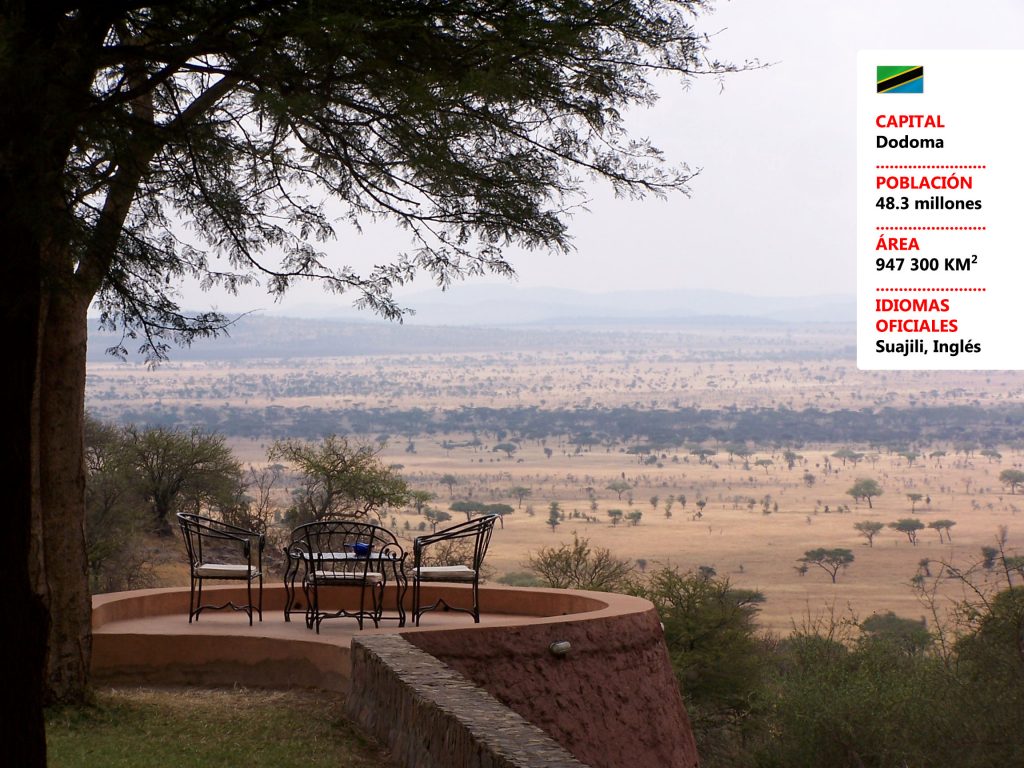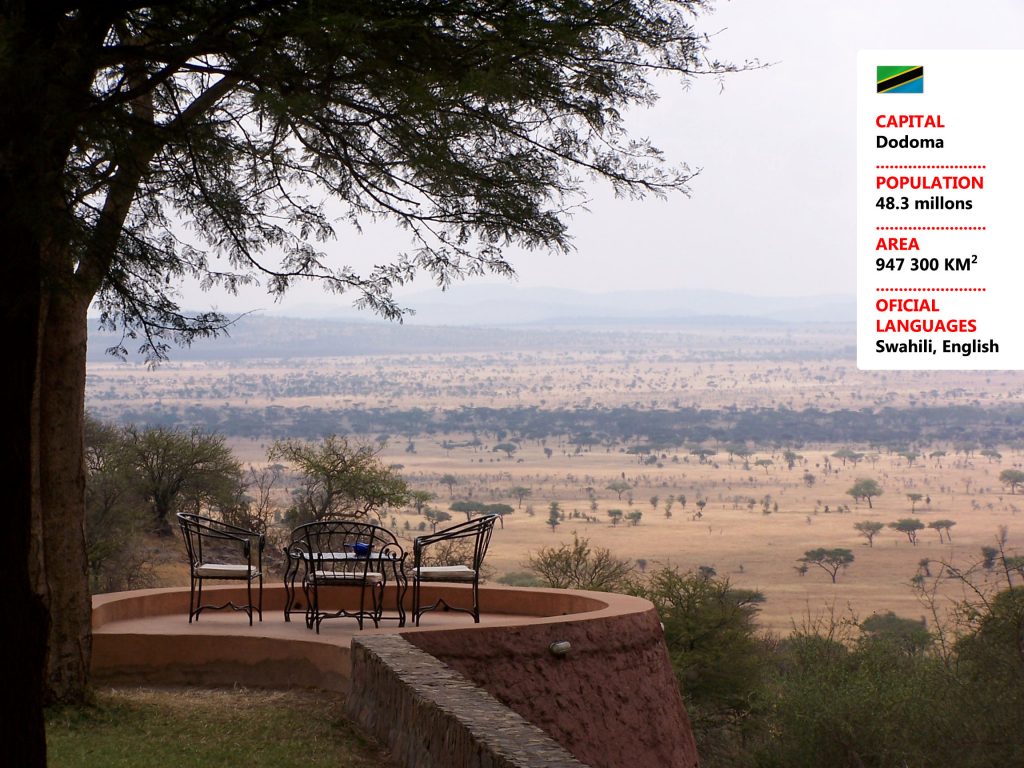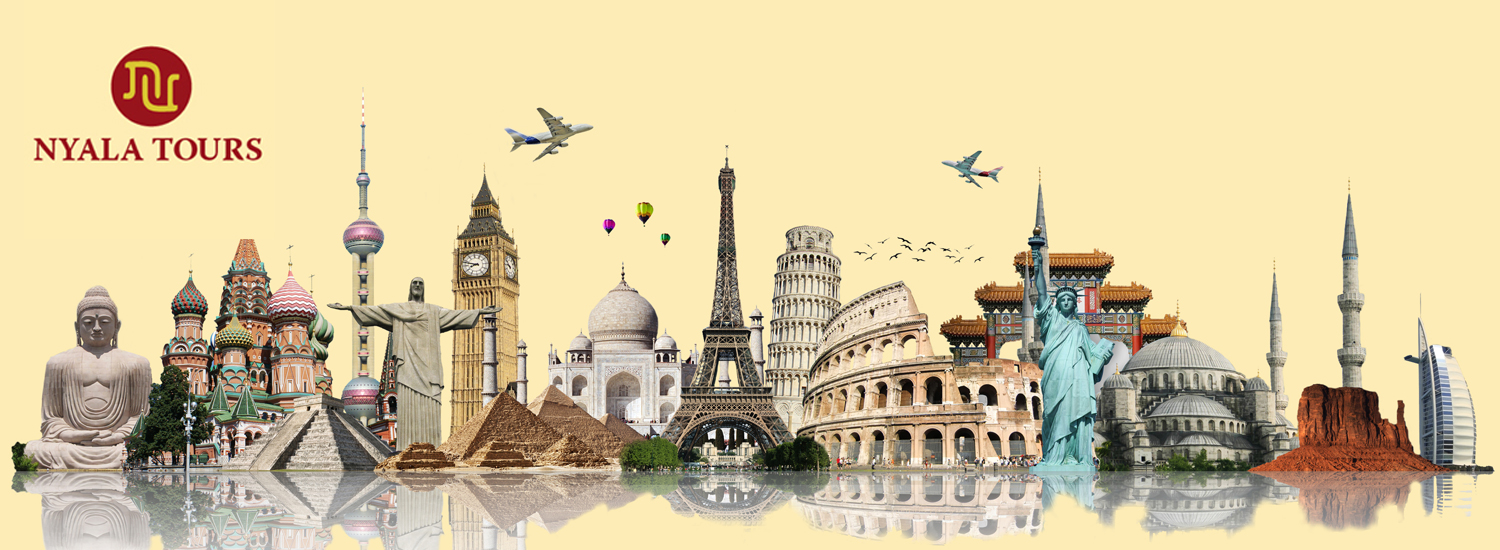
Tanzania con su magníficas reservas de fauna salvaje, es junto a Kenia uno de los principales países para hacer safaris. Tanzania es un destino muy completo para quién busca safaris, contando quizás con los dos parques nacionales más importantes de toda Africa, el inmenso Serengueti y el espectacular cráter del Ngorongoro y para quién busca descansar en la playa, visitando la isla de Zanzibar.
Población: 57 millones
Superficie: 945.000 km
Visado: por internet o a la llegada.
Época a visitar: Al estar estar en el ecuador cualquier época tiene buena temperatura y se puede visitar en todo el año. Hablamos siempre de un clima primaveral para nosotros. Las precipitaciones varían entre los 20 mm. de julio (el mes más seco) y los 200 mm. de abril (el más lluvioso). Existen dos estaciones lluviosas: de marzo a principios de Mayo (lluvias largas) y de octubre a finales de noviembre (lluvias cortas).
¿Qué visitar?
Parque Nacional del Kilimanjaro. Fue creado en el año 1973 y se extiende por una superfície de 756 kilómetros cuadrados. A la montaña del Kilimanjaro se la ha denominado El techo de África y es que esta cumbre es la más alta del continente africano y un paraíso para los amantes de la escalada. Se alza entre Kenia y Tanzania y está formado por tres volcanes dormidos: el Kibo, el Shira y el Mawenza. El Kibo se corona con la cima más alta de África, el Pico Uhuru (5.895 metros).
Existen ocho posibles rutas para alcanzar el Kilimanjaro, sin embargo, la más popular y asequibles es la que parte de la localidad de Marangu. La mejor época para subir al Kilimanjaro es el comienzo del año, durante los meses de enero y febrero. La subida a la montaña requiere al menos cinco días de trayecto por esta ruta, aunque existen otras vías para las que se necesitan al menos seis días. El paisaje desértico y lunar que se disfruta en la subida le proporcionará la sensación de llegar al fin del mundo.
Parque Nacional del Lago Manyara. Una imagen típica pero no por ello menos hermosa de este parque es la que ofrecen los leones encaramados en las acacias. La visita a este parque suele complementarse con el recorrido por el Parque Nacional de Serengeti y por el Ngorongoro.
Al tener distintos hábitats posee una gran variedad de fauna y flora en una pequeña zona. Es una región semiárida donde puede contemplar selvas de aguas subterráneas, zonas pantanosas, cañaverales, praderas, bosques de acacias, baobabs, arbustos espinosos y fuentes termales sulfurosas.
Parque Nacional del Serengeti. Maa Siringhet es la denominación swahili de esta gran llanura que alberga la concentración más alta de animales del mundo. Aquí conviven más de 1.300 ñus, 500.000 gacelas, 200.000 cebras, 150.000 impalas, 80.000 búfalos, 13.000 jirafas, 1200 elefantes y 3.000 leones.
Ocupa una superficie de 14.763 kilómetros cuadrados comprendidos entre la meseta del Ngorongoro y el Lago Victoria. El paisaje que domina este bello espacio natural se caracteriza por la presencia de peñascos aislados conocidos con el nombre de kopje. Serengeti fue protegido como reserva natural primero y en 1951 como Parque Nacional gracias a los esfuerzos de naturalistas y científicos procedentes de todo el mundo, ya que en su día estuvo amenazado por criadores de ganados y cazadores furtivos.
La mejor época para visitarlo es de diciembre a mayo. Una de las estampas más características del Parque está protagonizada por los ñús, que cada año realizan una espectacular migración a través de la frontera entre Kenia y Tanzania, llegando a Tanzania en el mes de noviembre. El Parque se localiza a 335 kilómetros de distancia de Arusha, a 150 kilómetros del Cráter del Ngorongoro y a 200 kilómetros del lago Manyara.
Parque Nacional Tarangire. Es elegido por numerosos animales durante la estación seca gracias al río Tarangire. En él podrá contemplar más de 300 especies distintas de aves, antílopes, ñus, cebras, elefantes y serpientes pitón en las zonas pantanosas.
Reserva Nacional Ngorongoro. Cráter volcánico de veinte kilómetros de diámetro situado a 2.286 metros de altitud y con un fondo de 610 metros. La vegetación que predomina es selva tropical y herbazales en el fondo de la caldera. Este entorno contiene una gran variedad de fauna como dik-diks, elefantes, ñus, cebras, gacelas, búfalos, rinocerontes, leones de melena negra, licaones, hienas manchadas, hipopótamos, avestruces, garcetas, pájaros secretario y grullas coronadas.
Quick guide to Tanzania

Tanzania with its magnificent wildlife reserves, is with Kenya one of the main countries for safaris. Tanzania is a very complete destination for those looking for safaris, with perhaps the two most important national parks in all of Africa, the immense Serengeti and the spectacular Ngorongoro crater and for those looking to rest on the beach, visiting the island of Zanzibar.
Population: 57 million
Surface: 945,000 km
Visa: online or upon arrival.
Time to visit: Being on the equator any time has a good temperature and can be visited throughout the year. We always talk about a spring weather for us. Precipitation varies between 20 mm. July (the driest month) and 200 mm. April (the rainiest). There are two rainy seasons: from March to early May (long rains) and from October to the end of November (short rains).
What to visit?
Kilimanjaro National Park. It was created in the year 1973 and covers an area of 756 square kilometers. Mount Kilimanjaro has been called The Roof of Africa and this summit is the highest in the African continent and a paradise for climbing enthusiasts. It rises between Kenya and Tanzania and consists of three sleeping volcanoes: the Kibo, the Shira and the Mawenza. The Kibo is crowned with the highest peak in Africa, Uhuru Peak (5,895 meters). There are eight possible routes to reach Kilimanjaro, however, the most popular and affordable is that part of the town of Marangu. The best time to climb Kilimanjaro is the beginning of the year, during the months of January and February. The climb to the mountain requires at least five days of travel on this route, although there are other routes for which at least six days are needed. The desert and lunar landscape that is enjoyed on the climb will give you the feeling of reaching the end of the world.
Lake Manyara National Park. A typical but no less beautiful image of this park is that offered by lions perched on acacias. The visit to this park is usually complemented by the tour of the Serengeti National Park and the Ngorongoro. Having different habitats has a great variety of fauna and flora in a small area. It is a semi-arid region where you can contemplate rainforests, swampy areas, reeds, grasslands, acacia forests, baobabs, thorny bushes and sulphurous hot springs.
Serengeti National Park. Maa Siringhet is the Swahili denomination of this great plain that houses the highest concentration of animals in the world. Here more than 1,300 wildebeest, 500,000 gazelles, 200,000 zebras, 150,000 impalas, 80,000 buffalo, 13,000 giraffes, 1200 elephants and 3,000 lions live together. It occupies an area of 14,763 square kilometers between the Ngorongoro plateau and Lake Victoria. The landscape that dominates this beautiful natural space is characterized by the presence of isolated cliffs known as kopje. Serengeti was protected as a first nature reserve and in 1951 as a National Park thanks to the efforts of naturalists and scientists from all over the world, since in its day it was threatened by cattle breeders and poachers. The best time to visit it is from December to May. One of the most characteristic prints of the park is the wildebeest, which every year make a spectacular migration across the border between Kenya and Tanzania, arriving in Tanzania in the month of November. The Park is located 335 kilometers away from Arusha, 150 kilometers from the Ngorongoro Crater and 200 kilometers from Lake Manyara.
Tarangire National Park. It is chosen by numerous animals during the dry season thanks to the Tarangire River. In it you can see more than 300 different species of birds, antelopes, wildebeest, zebras, elephants and python snakes in the swampy areas.
Ngorongoro National Reserve. Volcanic crater twenty kilometers in diameter located at 2,286 meters of altitude and with a bottom of 610 meters. The predominant vegetation is rainforest and grasslands at the bottom of the caldera. This environment contains a wide variety of fauna such as dik-diks, elephants, wildebeest, zebras, gazelles, buffalo, rhinos, black-mained lions, hunting dogs, spotted hyenas, hippos, ostriches, egrets, secretary birds and crowned cranes.

Deja una respuesta